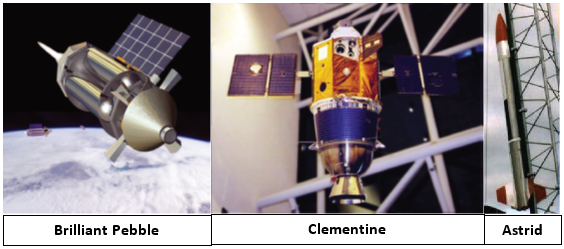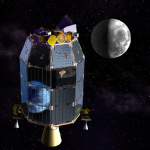“. . . Many of our potential adversaries are pursuing advanced weapons development not seen in decades. Individually, they pose serious concerns to our national security and the international community. Collectively, they represent a vast spectrum of complex and volatile threats that I believe will only continue to grow and threaten the homeland if we hesitate to act decisively.” ~ Admiral William E. Gortney, March 10, 2016
Admiral Gortney wears two important complementary hats:
- As Commander of the North American Aerospace Defense (NORAD) Command—a joint command with Canada, he is responsible for providing aerospace warning, aerospace control and maritime warning in defense of North America — basically NORAD’s continuing Cold War mission; and
- As Commander of U.S. Northern Command, he is responsible for homeland defense, civil support and security cooperation to defend and secure the United States and its interests — against the full complement of threats — including as the top commander of our Air and Ballistic Missile Defense (BMD) systems.
Given the growing belligerence of North Korea’s unpredictable “Great Leader” (Click here for yesterday’s Washington Free Beacon posting by Bill Gertz) and the mix of ISIS and other jihadis with potential Islamic nukes (from Iran’s nuclear development and/or Pakistan’s nuclear weapons stockpile), both roles are important to our national security.
Click here for Admiral Gortney’s prepared testimony to the March 10, 2016 SASC Hearing. He was joined by the commanders of U.S. Strategic Command — Admiral Cecil E. D. Haney (Click here.) and U.S. Southern Command — Admiral Kurt W. Tidd (Click here.) to review their programs and their Defense Authorization Request for Fiscal Year 2017. Click here for a video of the full 2-hour hearing (begins about 18 minutes into the posted recording, with Chairman John McCain’s introduction) which includes important exchanges with various senators on urgently important subjects — from the range of threats we confront and the adequacy of our current funding to address shortfalls in key programs.
Get Off the Wrong Side of the Cost Curve!
For my purposes in this message, I will focus on Admiral Gortney’s important comments on the inadequacy of our current BMD systems to remain competitive against anticipated proliferating threatening ballistic missiles — which can overwhelm our current defense designs.
His shorthand was that “We are on the wrong side of the cost curve.”
In other words, a current defense interceptor costs so much more than its ballistic missile targets that we cannot afford to keep up if our adversaries just buy more ballistic missiles to attack us.
I couldn’t agree more with Admiral Gortney’s bottom line view that in addition to getting on the right side of the cost curve, “We’re going to need more capability to engage the threat throughout its flight, keep them on the ground, kill them on the (launch) rails, kill them in boost phase and then get more warheads in space in mid-course.”
Back to the Future?
The good news is that we know how to do this — in fact, as I discussed in my March 8, 2016 message, we knew how over a quarter century ago. But important Strategic Defense Initiative (SDI) programs were derailed in the opening days of the Clinton administration, as then Defense Secretary Les Aspin “took the stars out of Star Wars” and scuttled President Reagan’s most important programs that I left behind as SDI Director on January 20, 1993. I again encourage you to click-on and read two important references from that era:
- “The Refocused Strategic Defense Initiative,” February 12, 1991 Annotated Briefing to the Press by then Assistant Secretary of Defense for International Security Policy Steven Hadley and SDI Director Henry. F. Cooper, announcing the Global Protection Against Limited Strikes (GPALS) system concept (Rotate clockwise for easy reading); and
- “Conceptual and Burden Sharing Issues Related to SBIs,” March 1992 Report to Congress describing in more detail the GPALS system and the congressionally approved and funded program left to the Clinton administration, which completely scuttled it. This Report was prompted by Democrat congressional leaders who sought, in particular, to block the development of Space-Based Interceptor (SBI) systems.
The Brilliant Pebbles SBI system was the first, and to my knowledge only, BMD system that we were confident could get us on the “right side of the cost curve.”
The cost for research, development, deployment and operations for 20 years for 1000 Brilliant Pebbles (including to replace each Pebble once) was estimated by several independent Pentagon-approved studies to be $10-billion in 1988 dollars — corresponding to $20-billion in 2016 dollars. Quite affordable then, and given the intervening technological advances, we should be able to do the job for much less today — story for another day.
Most important was that all key Brilliant Pebbles technology was space-qualified in 1994, in an effort that took less than 2-years. The Clementine program was invented in my SDI office as a hedge technology demonstration program because congressional leaders had made clear their intent to kill the Brilliant Pebbles effort. See historian Don Baucom’s “Rise and Fall of Brilliant Pebbles.”
The End of Brilliant Pebbles—and SDI.
With the strong support of then Defense Secretary Dick Cheney, who persuaded President Bush to threaten to veto congressional efforts to kill the program entirely, Congress appropriated $300 million for FY 1993. We restructured the Pentagon’s Defense Acquisition Board approved Demonstration and Validation (DemVal) program being executed by two contractor teams (Martin Marietta and TRW-Hughes), enabling a viable technology demonstration effort, but it was not to be.
The Clinton administration, led by former Chairman of the House Armed Services Committee and then Defense Secretary Les Aspin, “took the stars out of Star Wars.”
They scuttled essentially all SDI cutting edge technology efforts (while dispersing the scientific teams that were developing them) and renaming the remaining program, no doubt seeking to remove all vestiges of President Reagan’s visionary effort to build truly effective BMD systems — “on the right side of the cost curve.”
Moreover, no administration since 1993 has revived these innovative efforts.
But Clementine Survived—and Proved Brilliant Pebbles was Viable!
The Clementine space vehicle, integrated under the leadership of the Naval Research Laboratory, used scavenged components from the Lawrence Livermore National Laboratories (LLNL) Brilliant Pebbles demonstration efforts to return to the Moon for the first time in a quarter century, among other things discovering water in the lunar polar regions (confirmed by later NASA missions), which enhances the prospects for one day establishing manned lunar bases as a stepping stone for further space travel — perhaps on the way to Mars?
So voluminous was the data that several issues of Science, the prestigious journal of the National Academy of Sciences, were dedicated to publishing the 13 spectral bands of Clementine data; and the small Clementine team, led by Air Force Colonel Pete Rustan who regrettably passed away in 2013, received awards from the National Academy and NASA for Clementine’s scientific achievements and its demonstration of the “Faster, Better, Cheaper” approach sought by then NASA Administrator Dan Goldin. Dr. Goldin previously had led TRW’s Brilliant Pebbles team and also well understood the importance of the demonstration for missile defense applications as well as its scientific achievement.
The $80 million Clementine mission obtained much more data on the Lunar surface than in NASA’s entire Apollo program. Included were some 13 spectral bands that had been deemed necessary by critical reviewers in Don Baucom’s described 1989 “season of studies” to deal with anticipated offensive countermeasures. A model of Clementine now hangs in an honored place in Washington’s Smithsonian Institute. The only component of the Brilliant Pebbles technology that was not demonstrated by the Clementine mission was the miniature rocket thrusters — and they were also tested on a later 1994 Astrid flight.
 The entire Clementine mission was commanded by an on-board “hand-held size” prototype Brilliant Pebble computer with the power of a Cray-1 supercomputer — then a cutting edge scientific supercomputer that would fill a room. Such lightweight powerful computers are now commonplace, even children play games with them.
The entire Clementine mission was commanded by an on-board “hand-held size” prototype Brilliant Pebble computer with the power of a Cray-1 supercomputer — then a cutting edge scientific supercomputer that would fill a room. Such lightweight powerful computers are now commonplace, even children play games with them.
Key Demonstrated Innovation from the Private Sector!
Confidence in a remaining key operational system element was provided by the private sector — evidence that demonstrates the possible mass production of a large number of satellites and a cost-effective on-orbit space-station-keeping management system to support them. That a cost-effective concept of operations for a full constellation of Brilliant Pebbles is possible was demonstrated in the 1990s by a Motorola-led consortium that developed, deployed in record time and operated the Iridium world-wide telecommunication system illustrated below.
 Almost twenty years ago, the Iridium team built and launched an initial constellation of 95 mid-sized (800 kg each — over 10 times more mass than the anticipated 50 kg Brilliant Pebble) spacecraft between May 1997 and November 1998, at a peak build-rate of 4 spacecraft-per-week; employing 19 launchers from a wide variety of American and foreign space-launch service-suppliers. Spacecraft quality was operationally demonstrated to be exceptionally high — only 2 of the launched 95 failed in the first half-dozen years of operation, an in-service mortality rate unrivalled in mass-produced spacecraft of all types and origins. The Iridium constellation provided world-wide coverage for communications via handheld cellphones and pagers.
Almost twenty years ago, the Iridium team built and launched an initial constellation of 95 mid-sized (800 kg each — over 10 times more mass than the anticipated 50 kg Brilliant Pebble) spacecraft between May 1997 and November 1998, at a peak build-rate of 4 spacecraft-per-week; employing 19 launchers from a wide variety of American and foreign space-launch service-suppliers. Spacecraft quality was operationally demonstrated to be exceptionally high — only 2 of the launched 95 failed in the first half-dozen years of operation, an in-service mortality rate unrivalled in mass-produced spacecraft of all types and origins. The Iridium constellation provided world-wide coverage for communications via handheld cellphones and pagers.
It is a challenge to get the U.S. government to accomplish what was done in the private sector, with its profit motive. But the Motorola team’s policies and procedures should be emulated by the “powers that be.”
Or perhaps the “powers that be” might entice the private sector to be creative in accomplishing this important innovative task?
You think?
Bottom Lines!
I know this needed innovation is possible — and is entirely consistent with Defense Secretary Ashton Carter’s proposals in his March 3, 2016 breakfast discussions at Microsoft in Seattle, urging technologists to come to the aid of our national security needs, under their own initiative.
The technology was available twenty years ago to build a very effective missile defense system on the “right side of the cost curve.” The Pentagon has invested in a number of missile defense systems many times what was needed to develop, deploy and operate such a global space-based defensive system to protect the American people and our overseas troops, allies and friends. It’s time to get it right!
More next week, on the eve of the 33rd anniversary of President Ronald Reagan’s March 23, 1983 speech that launched the SDI program. Back to the Future, indeed!
On the right side of the cost curve!
Near-Term High Frontier Plans.
We will continue to inform our readers of the looming threats we confront — and where appropriate urge them to engage in countering those threats. We will press for building the most cost-effective ballistic missile defenses possible and working with South Carolina folks to build a coalition to engage constructively with private citizens and their local and state representatives and other authorities to work with the SC National Guard in understanding and responding to the existential threats to the electric power grid.
We are especially focused on the nuclear power reactors that produce 60-percent of SC electricity—and more generally 20-percent of the nation’s electricity. If it can be assured that they “operate through” a major blackout of the electric power grid — and I believe it can, then these reactors can play a very important role for resurrecting the grid over an extended time and supporting the general public’s survival in the meantime.
What can you do?
Join us in praying for our nation, and for a rebirth of the freedom sought, achieved and passed to us by those who came before us.
Help us to spread our message to the grass roots and to encourage all “powers that be” to provide for the common defense as they are sworn to do.
Begin by passing this message to your friends and suggest they visit our webpage www.highfrontier.org, for more information. Also, please encourage your sphere of influence to sign up for our weekly e-newsletter.
Encourage them to review our past email messages, posted on www.highfrontier.org, to learn about many details related to the existential manmade and natural EMP threats and how we can protect America against them. I hope you will help us with our urgently needed efforts, which I will be discussing in future messages.
Click here to make a tax deductible gift. If you prefer to mail a check, Please send it to 500 North Washington Street, Alexandria, VA 22314.
E-Mail Message 160315
Please click here to read Past Weekly Updates!
Please help High Frontier continue this important and timely work!
Be sure to follow us on our Social Sites!




